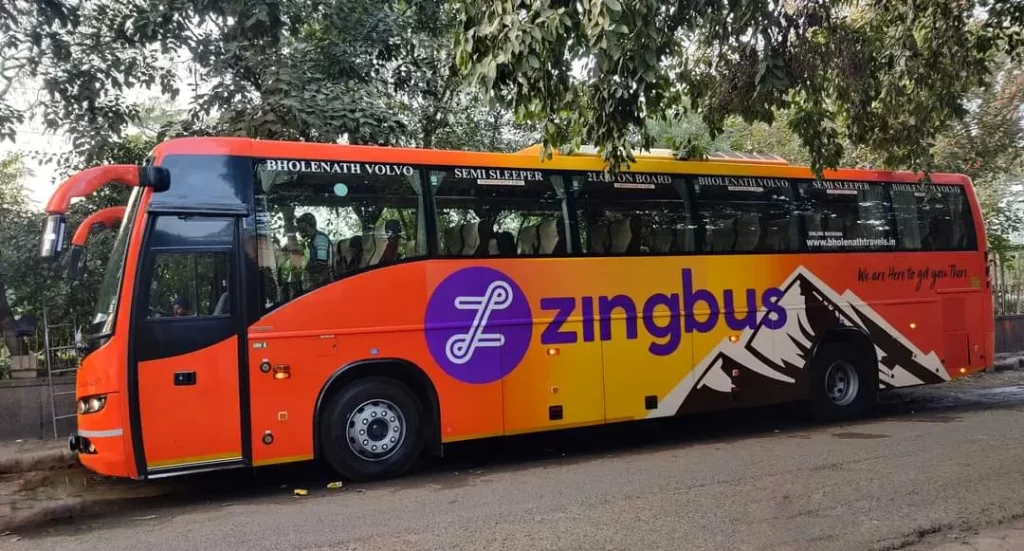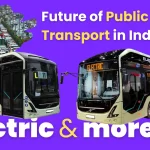
Table of Contents
- Brief Overview of Electric Vehicles in India
- Importance of Electric Buses in Sustainable Public Transportation
- EV Market Trends, Policies, and Key Players
- Key Players in India’s EV Industry
- Electric Buses in India: A Game Changer for Country’s Public Transport System
- Challenges While Adopting Electric Buses in India
- Electric Bus Prices in 2024 and Top 5 Electric Bus Manufacturers in India
- Comparing Features and Performance of Electric Buses In India
- Electric Vehicle Charging Stations in India and the Infrastructure
- Life Cycle Cost (LCC) or Total Cost of Ownership (TCO) of an Electric Bus in India
- Impact of Electric Buses on Earth’s Ecosystem
- Case Studies on Electric Buses in India
- Future of Electric Buses in India
- Electric Buses Price in India: Key Information to Ponder
- The Role of Electric Buses in India’s Sustainable Future
- Electric Buses in India: Commonly Aksed FAQs
- 1. What is the average life cycle of an electric bus compared to traditional buses?
- 2. How long does charging an electric bus in India take?
- 3. Are there subsidies available for purchasing electric buses?
- 4. Where’s zingbus in this sector?
- 5. When will the zingbus launch its electric bus fleet in India?
Brief Overview of Electric Vehicles in India
India’s electric vehicle (EV) market is growing and booming like never before. The market is rapidly growing and influencing electric bus price in india, fueled by increasing consumer demand and supportive government policies. The Economic Survey done in 2023 predicts a yearly 49% CAGR growth rate for 2022 to 2030, with annual sales reaching one crore by 2030. It suggests an optimistic scenario to reduce dependence on fossil fuels to promote sustainable transportation.
Importance of Electric Buses in Sustainable Public Transportation
Electric buses are going to play a pivotal role in strengthening the sustainability of public transportation not only in India but across the globe. They can crucially reduce carbon emissions, cut operational costs, and enhance air quality in urban areas. As the population in cities densifies and traffic grows, electric buses can provide a cleaner alternative to conventional buses.
EV Market Trends, Policies, and Key Players
Constantly Changing EV Market Status
The Electric Bus market in India holds a modest 5% share of total vehicle sales. However, projections suggest this figure could soar to over 40% by 2030. The market has grown significantly, with electric two-wheelers and three-wheelers leading the sales charts.
Government Policies and Initiatives
The government of India is monitoring the rising population closely and has implemented various initiatives to promote electric vehicle adoption in the country. The Faster Adoption and Manufacturing of Electric Vehicles (FAME scheme) initiative provides financial incentives for both manufacturers and consumers. Additionally, the EV30@30 initiative aims for a 30% sales share for EVs by 2030.
Key Players in India’s EV Industry
Key EV players of electric buses in India include Olectra Greentech, Tata Motors, JBM Auto, Ashok Leyland, and others. EV bus manufacturing companies like these are investing optimistically in R&D and the production capabilities of their manufacturing plants across the county and the globe to meet India’s constantly rising demand for electric vehicles. Along with these e-bus leaders, zingbus is emerging as a leader in the electric bus sector and is starting with a fleet of electric buses in India to support the country’s vision and mission.
Electric Buses in India: A Game Changer for Country’s Public Transport System
Benefits of Electric Buses
Electric buses offer numerous benefits, such as the following:
#1. Impact of E-buses on Environment: Reduction in greenhouse gas (GHG) emissions.
#2. Cost Efficiency of Electric Buses: Significantly lower operational costs due to reduced fossil fuel expenses and associated maintenance needs for traditional buses.
#3. Noise Reduction: Quieter operation compared to diesel buses.
Challenges While Adopting Electric Buses in India
Despite electric buses’ several benefits, challenges such as high initial costs, limited charging stations and infrastructure across the country, and range anxiety hinder a country like India’s widespread adoption.
Electric Bus Prices in 2024 and Top 5 Electric Bus Manufacturers in India
| S. No. | Top 5 Electric Bus Manufacturers In India | Notable e-bus Models In India | Electric Bus Price In India Per Unit |
| 1. | Tata Motors | Tata Starbus EV | ₹2.20 crore (₹22,000,000) |
| 2. | JBM Auto | JBM Ecolife | ₹2 Crore (₹2,00,00,000) |
| 3. | Olectra Greentech | Olectra K9 | ₹2.5 crore to ₹3 crore |
| 4. | Ashok Leyland | Ashok Leyland Electric Bus | Versa EV; From ₹47.60 Lakh 13.5M Intercity Chassis; From ₹47.60 Lakh 13.5M Tourist Chassis; From ₹41.80 Lakh Switch Mobility EiV12; Approx. ₹70 Lakh – ₹1 Crore |
| 5. | Others | BYD, Eicher | BYD e6 – ₹29.15 Lakh BYD eMax 7 – ₹30 Lakh Eicher Skyline Pro E (9m) – ₹1.5 Crore |
Electric Bus Price Range for Different Models
Electric bus prices typically range from ₹1 crore to ₹2 crore, depending on the model and manufacturer.
Major Factors Influencing Electric Bus Prices in India are:
#2. Manufacturing costs
#3. Government subsidy schemes like e-Amrit
Comparison with Diesel Bus Prices
While diesel buses are generally cheaper upfront (around ₹50 lakhs), the long-term savings on fuel and maintenance for electric buses can offset the initial investment.
Top 3 Electric Bus Models with Price and Their Specifications
#1. Tata Starbus EV
Capacity: Up to 40 passengers
Range: Approximately 250 km per charge
Initial Upfront Cost: ₹2.20 crore (₹22,000,000)
#2. JBM Ecolife
Capacity: Up to 32 passengers
Range: Almost 200 km per charge
Initial Upfront Cost: ₹2 Crore (₹2,00,00,000)
#3. Electra K9
Capacity: Up to 50 passengers
Range: About 300 km per charge
Initial Upfront Cost: ₹ 2.5 crore to ₹3 crore
Comparing Features and Performance of Electric Buses In India
Electric bus models in India today vary significantly in terms of their capacity (how many passengers can sit comfortably), range (how much distance they can cover on a single charge), and battery technology. However, the choice often depends on specific operational needs and urban environments.
Mileage and Range of an Electric Bus
Average Range of Electric Buses in India
Most electric buses offer a range of 200 km to 300 km on a single charge. However, as discussed previously in the pricing table.
Primary Factors Affecting Electric Bus Mileage
The range varies from model to model and manufacturer to manufacturer and based on the following factors:
#1. Driving conditions
#2. Load Capacity
#3. Battery health
#4. Operating conditions like weather and roads in a particular region
Comparing Electric Buses with Conventional Buses
Electric buses typically provide better mileage per unit than diesel-engine buses due to their lower operational costs. However, several other challenges (like operating an e-bus in harsh cold climates) must be considered while selecting an e-bus model.
Electric Vehicle Charging Stations in India and the Infrastructure
Status of Electric Vehicle Charging Stations in India as of Now
As of Feb 2024, there are over 12,146 electric vehicle charging stations in India. However, more is needed for widespread EV adoption across the country.
Types of Charging Systems for Buses
Charging systems include fast chargers (DC) that can charge a bus in under an hour and slower AC chargers that take several hours.
Future Plans for Infrastructure Development of Electric Vehicle Charging Stations in India
The government aims to establish over 1.32 million charging stations by 2030 as part of its broader EV strategy.
Life Cycle Cost (LCC) or Total Cost of Ownership (TCO) of an Electric Bus in India
Initial Investment vs. Long-Term Savings
Although electric buses require a higher initial investment than their diesel counterparts, they offer substantial savings over time. This is because they require little to no fossil fuels and have low maintenance costs.
Maintenance Costs
Electric buses generally have lower maintenance costs due to fewer moving parts than engines that run on fossil fuels, hydrocarbons, or hydrogen-based fuels.
Associated Fuel (Electricity) Costs
Electric vehicles’ costs are significantly lower than fossil fuel prices since they use batteries to run on a road, contributing to maximum savings.
Impact of Electric Buses on Earth’s Ecosystem
Significant Cut in Carbon Emissions
Electric buses are the best choice if we are looking for ways to achieve net zero by 2030. E-buses significantly reduce carbon emissions compared to buses that need fossil fuels to power their wheels.
Noise Pollution Reduction
One of the more significant benefits of electric buses is that they operate much more quietly than traditional vehicles, significantly reducing noise pollution in areas that require urgent noise pollution solutions.
The Overall Environmental Benefits of Electric Buses
The shift towards electric public transport in India can contribute to achieving national climate goals and goals set by the United Nations and other global bodies.
Case Studies on Electric Buses in India
Large Electric Bus Fleets in India’s Metro Cities
Metro cities in India, like Bangalore and Delhi, have successfully integrated large fleets of electric buses into their public transport systems. This showcases their viability, green vision, and hope for a better world.
Lessons Learned and Best Practices While Adopting Electric Buses
Adopting electric buses seems easy on paper, but experts and engineers must implement them in the country.
Key lessons include:
#1. The importance of robust charging infrastructure in the country
#2. Public awareness campaigns like the EU’s Sustainable Bus Tour and the World EV Day
#3. Training of bus staff regularly
Future of Electric Buses in India
Projected Growth and Adoption Rates of Electric Buses in India
Electric buses are projected to grow in India and the world, and adoption rates are expected to rise significantly as infrastructure improves and prices decrease in a few years.
Technological Advancements to Support the Growth of Electric Buses In India
Innovations such as improved battery life will power the performance and efficiency of electric buses more than investing in other aspects of improving their performance. This impacts urban mobility in India.
Deploying several fleets of electric buses in India will not just change the face of public transport in the country; it will be a game-changer for urban mobility. Rolling out sizeable electric bus fleets in the country will provide cleaner alternatives, help reduce traffic congestion, and cut pollution in India’s metro cities. This is not just a potential; it’s a reason to be hopeful about the future of city transportation in India.
Electric Buses Price in India: Key Information to Ponder
The growth of electric buses is crucial for sustainable transportation in India and the world. With the support of national and international governmental advancements, the future looks promising for this sector.
The Role of Electric Buses in India’s Sustainable Future
Electric buses are no longer just a trend or a fantasy of science fiction; they represent a fundamental shift towards sustainable urban transport solutions that mitigate climate change impacts and improve public health at scale.
Electric Buses in India: Commonly Aksed FAQs
1. What is the average life cycle of an electric bus compared to traditional buses?
Ans: Typically around 10-15 years compared to their diesel counterparts.
2. How long does charging an electric bus in India take?
Ans: Fast chargers can fully charge an electric bus within an hour. However, standard chargers may take several hours. For help, contact your electric bus manufacturer or request a service from your trusted bus partner.
3. Are there subsidies available for purchasing electric buses?
Ans: Government schemes like FAME II and e-Amrit provide financial incentives for electric bus buyers.
4. Where’s zingbus in this sector?
Ans: zingbus is in talks with multiple EV stakeholders in and outside the country and is actively exploring the global electric bus market. The focus is to integrate sustainable transport solutions into the operations to promote eco-friendly travel options and provide world-class travel experiences to passengers.
5. When will the zingbus launch its electric bus fleet in India?
Ans: Zingbus has recently joined Jio-bp and plans to launch its electric bus service within the next year (2025), aiming to contribute to greener urban mobility solutions in India. To stay in the know, please follow the blog section and social media channel – @zing.bus.






Leave a Reply